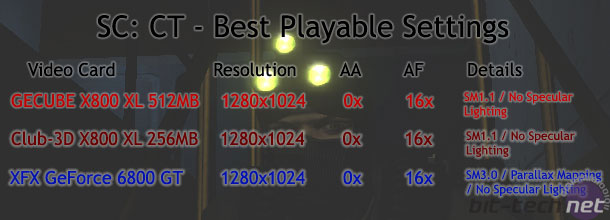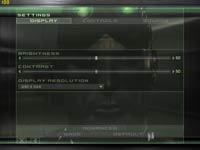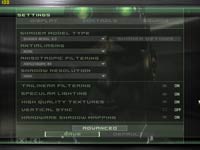Splinter Cell: Chaos Theory
Publisher: UbisoftWe are using the full version of Splinter Cell: Chaos Theory patched to version 1.02. It features a new game engine that has been created around a heavily modified Unreal Engine 2 - the important thing to note is that the game only has two Shader profiles: Shader Model 1.1 and Shader Model 3.0. This means that all of ATI's video cards default to Shader Model 1.1, and only the GeForce 6 series are capable of using the Shader Model 3.0 path.
Despite the fact that ATI's cards only use a DirectX 8.1, Shader Model 1.1 path, the quality of rendering is fantastic in comparison to the Shader Model 3.0 rendering. However, the Shader Model 3.0 profile means that the GeForce 6 series and higher video cards are given a number of options for additional eye candy, including Parallax Mapping, High Dynamic Range Rendering, Tone Mapping and High-Quality Soft Shadows. These can all be enabled on GeForce 6 and GeForce 7 series video cards, and will make the gaming experience more realistic providing there is enough graphics processing power available.
We configured both Anti-Aliasing and Anisotropic Filtering from within the game, and thus the driver control panel was left set to "Application Controlled".
Below is a table of the best-playable settings that we found best for each video card configuration. In this title, we found that 25 to 30 frames per second minimum and a target of 50 frames per second (or higher) for the average frame rate delivered a smooth and fluid gaming experience across the rest of the game.

We were unable to use Specular Lighting on any of the video cards without a serious performance deficit leading to choppy frame rates, but that doesn't particularly matter on the Radeon X800 XL's, as there is a Shader Model 1.1 bug that results in blocky light mapping when specular lighting is enabled. This problem is not specific to ATI's video cards though, as the same happens if you play the game on a GeForce 6800 GT with the Shader Model 1.1 path.
There was no performance difference between the two Radeon X800 XL's, with both the 512MB and 256MB cards delivering very similar frame rates. In fact, the GECUBE Radeon X800 XL 512MB SilenCool Edition was slightly slower than the Club-3D Radeon X800 XL 256MB video card, with both minimum and average frame rates roughly one frame per second lower than than those on a 256MB Radeon X800 XL.

MSI MPG Velox 100R Chassis Review
October 14 2021 | 15:04








Want to comment? Please log in.